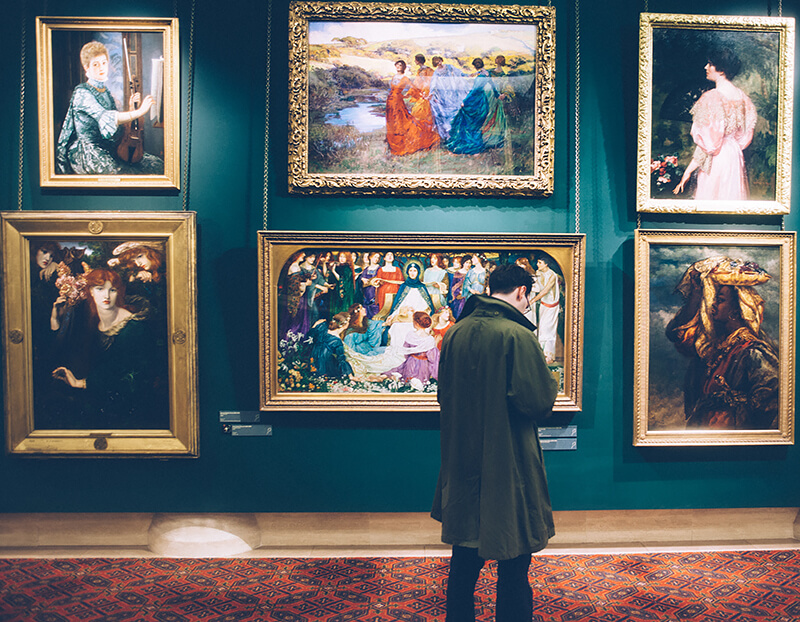Origins and Mission of Guerrilla Girls
In 1985, an anonymous group known as the Guerrilla Girls emerged to challenge sexism and racism in the art world. Donning gorilla masks, they used humor and striking statistics to expose the lack of diversity in major exhibitions. Their mission was sparked by a MoMA exhibit featuring only 13 women out of 169 artists.
The Guerrilla Girls' posters became their signature medium, displaying eye-opening facts about gender and racial disparities in museums. Their anonymity, achieved through masks, allowed them to focus attention on their cause rather than individual identities. They adopted the names of forgotten women artists like Frida Kahlo and Kathe Kollwitz to honor their legacies.
These activists appeared in unexpected places—on billboards, bus ads, and gallery walls. They posed uncomfortable questions like, "Do women have to be naked to get into the Met Museum?" As they evolved, the Guerrilla Girls expanded their focus to broader societal issues including police violence, voting rights, and environmental concerns.
Their global membership grew, maintaining anonymity while leaving a visible mark on the art world and beyond. The Guerrilla Girls blended creativity with activism, using art as a tool for awareness and transformation across various social and political arenas.
Tactics and Strategies
The Guerrilla Girls' approach combined humor, irony, and statistics to demand attention. Their posters weren't just displays; they were provocations that called for action. The "weenie count," comparing the scarcity of female artists to the abundance of female nudes by male artists in museums, exemplified their clever yet revelatory style.
Public demonstrations formed another key tactic. These carefully orchestrated events disrupted everyday spaces, forcing dialogue about representation in art. The group's use of hard data lent credibility to their claims, presenting inequities with undeniable clarity.
"We use facts, humor and outrageous visuals to expose sexism, racism and corruption in politics, art, film and pop culture."
By wearing gorilla masks, these activists became both mysterious and universal figures. This anonymity allowed them to address a wide range of issues from climate change to institutional racism, demonstrating how these topics intersect across various spheres.
The Guerrilla Girls' blend of humor and pointed critique set a standard for activism that was both approachable and transformative. Their legacy reminds us that art can be a powerful lens through which society can be questioned and reshaped.
Impact on the Art World
The Guerrilla Girls' activism prompted a significant shift in the art world. Museums and galleries began to reassess their collections and exhibitions, confronting the underrepresentation of women and artists of color. This wasn't a quiet change, but a vibrant collision of art and activism that challenged long-standing traditions.
As representation improved, museums started acquiring and showcasing more diverse works. This shift inspired new generations of artists who saw themselves reflected on gallery walls. Art criticism evolved too, acknowledging previously overlooked contributions and weaving discussions about diversity into the fabric of cultural discourse.
The group's influence extended to art education, as schools expanded their curricula to include a broader range of artists and perspectives. This academic shift mirrored a wider cultural awakening in media and entertainment.
The Guerrilla Girls' legacy is not just about reshuffling existing pieces, but about maintaining an ongoing conversation on equity and representation. They showed that the art world can evolve into a more just and creative space, where all voices are heard and celebrated.
Expansion Beyond Art
The Guerrilla Girls expanded their focus beyond the art world, venturing into broader social and political activism. They applied their creative tactics to issues like environmentalism and voting rights, transforming complex topics into relatable messages.
Their expansion demonstrated how art, politics, and social justice are interconnected. The Guerrilla Girls highlighted how power dynamics in the art world mirror broader societal inequities. This evolution invited audiences to become advocates in their own right.
"One of our goals is to reinvent the 'f' word – feminism. Our message: find your own crazy, creative way to be a feminist and an activist."
Today, their influence spans diverse forums, proving that art can be a catalyst for change across various spheres of life. The Guerrilla Girls continue to challenge us to imagine a more inclusive future where every voice finds its platform.

Legacy and Future Directions
The Guerrilla Girls have left an indelible mark on art activism, creating space for overlooked voices in art and beyond. Their legacy serves as both inspiration and challenge for future generations of artists and activists.
Looking ahead, the group is likely to evolve with the changing cultural landscape. Digital platforms and social media offer new opportunities for their brand of activism, potentially amplifying their reach. Collaborations across industries and geographies could further extend their impact on global issues like climate change, racial equality, and gender rights.
The enduring relevance of the Guerrilla Girls lies in their ability to inspire ongoing conversations about diversity and equity. They remind us that inclusion is not a fleeting moment but a movement, challenging institutions to commit to continuous reflection and reform.
As the Guerrilla Girls navigate future activism, they underscore that the art of advocacy is never complete. Their journey encourages vigilance, creativity in confronting apathy, and a sustained commitment to making all spaces welcoming to the full spectrum of human stories.
The Guerrilla Girls have shown that art can be a powerful tool for advocacy, pushing boundaries and sparking conversations about representation and equity. Their legacy is a testament to the impact of creative activism, reminding us that change is possible when voices unite for a common cause.
- Guerrilla Girls. Confessions of the Guerrilla Girls. HarperPerennial; 1995.
- Guerrilla Girls. The Guerrilla Girls' Bedside Companion to the History of Western Art. Penguin Books; 1998.
- Smith R. Have You Renovated? It's Time to Hang Art. New York Times. March 23, 2007.























